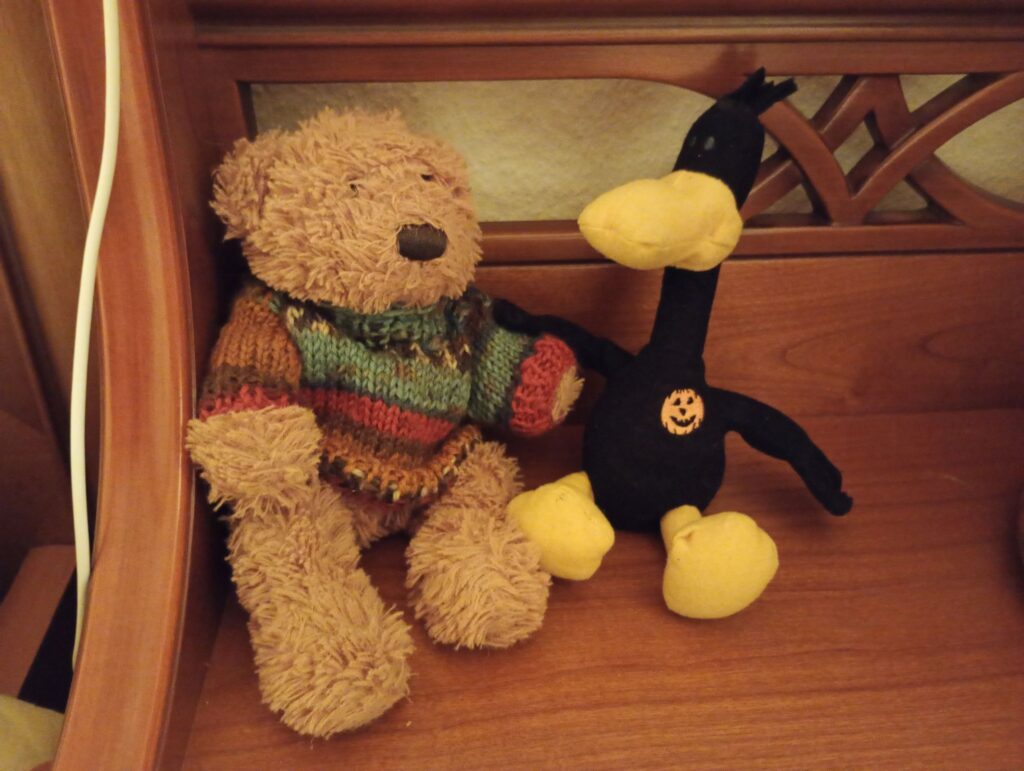

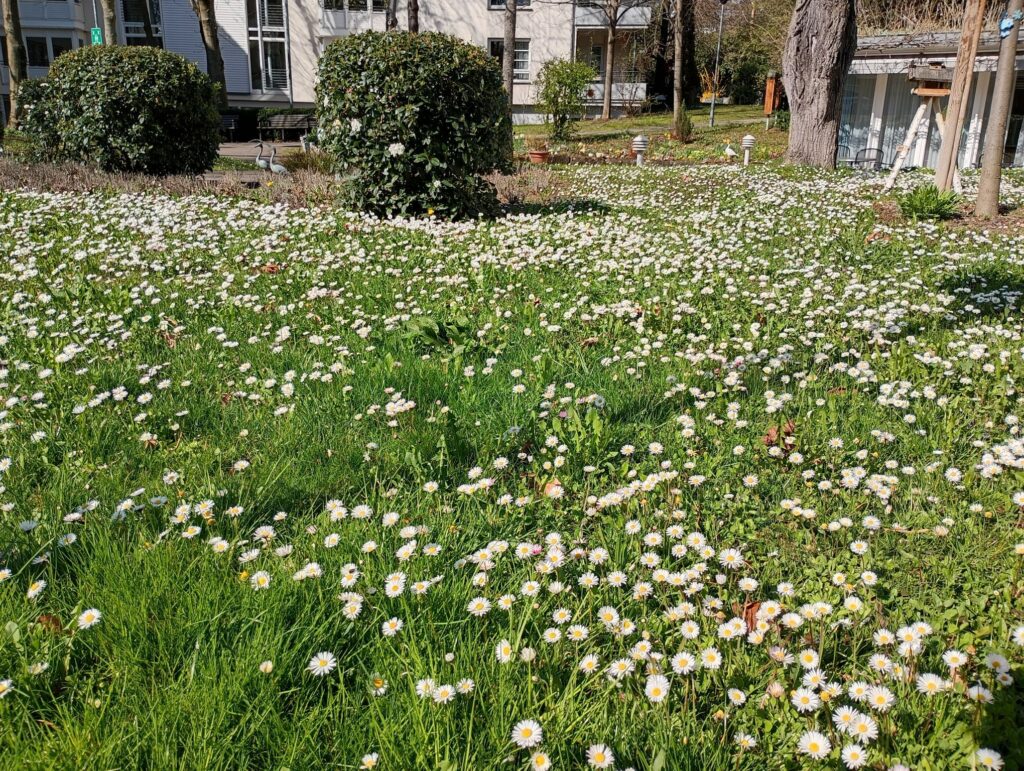
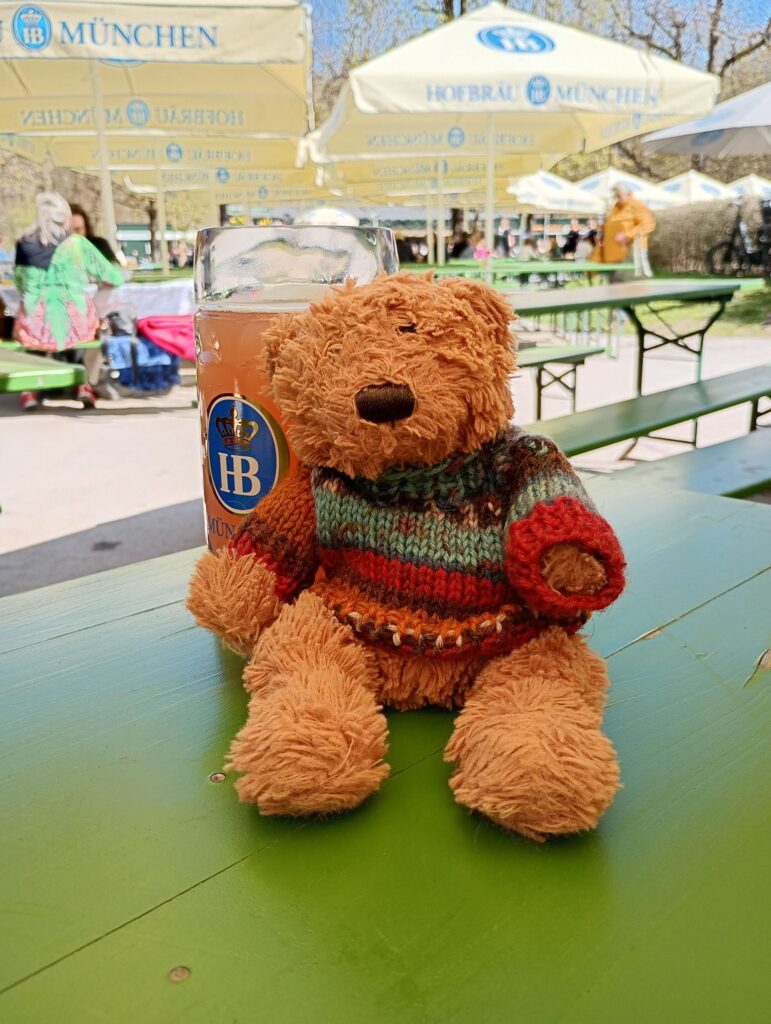




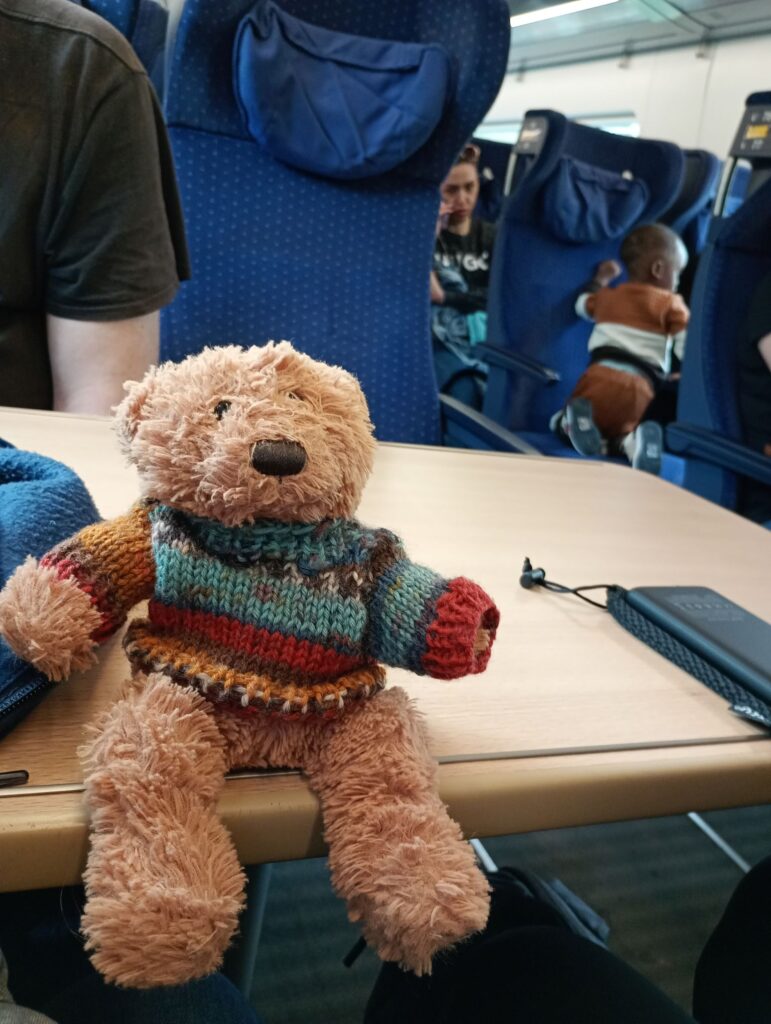

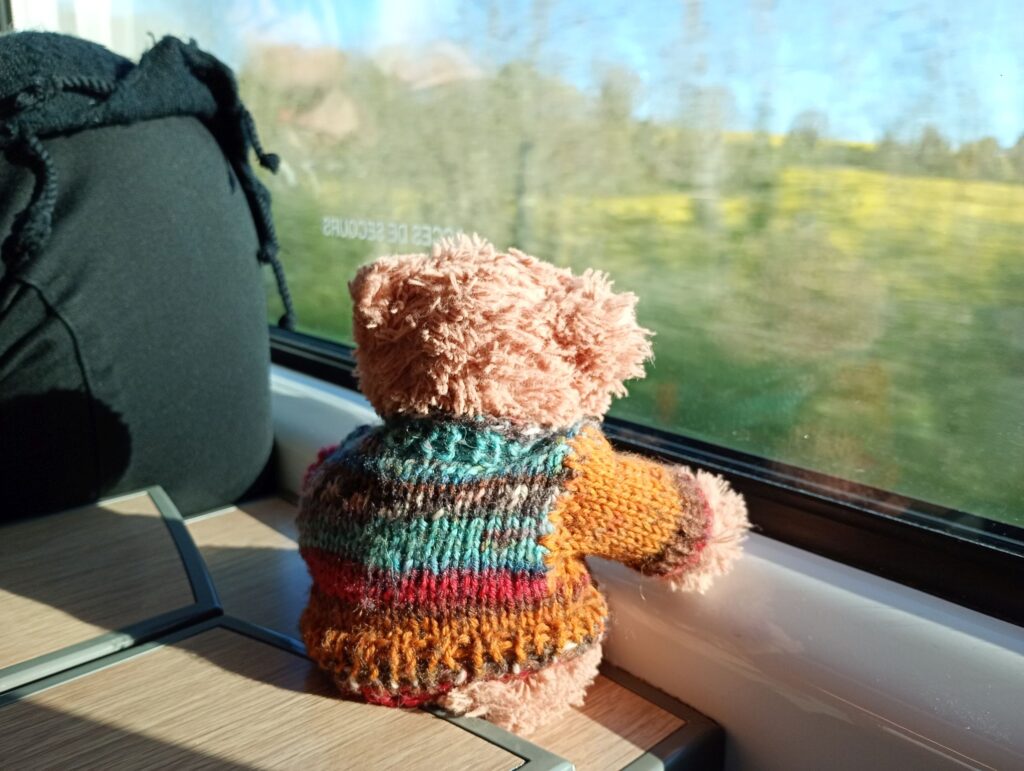
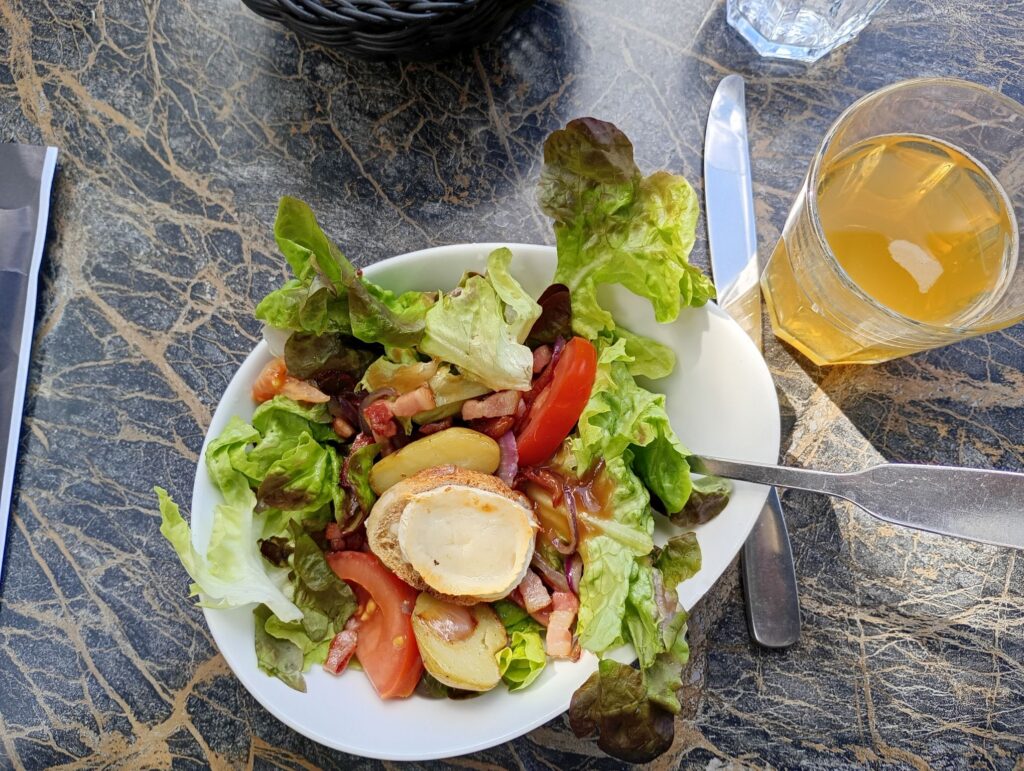

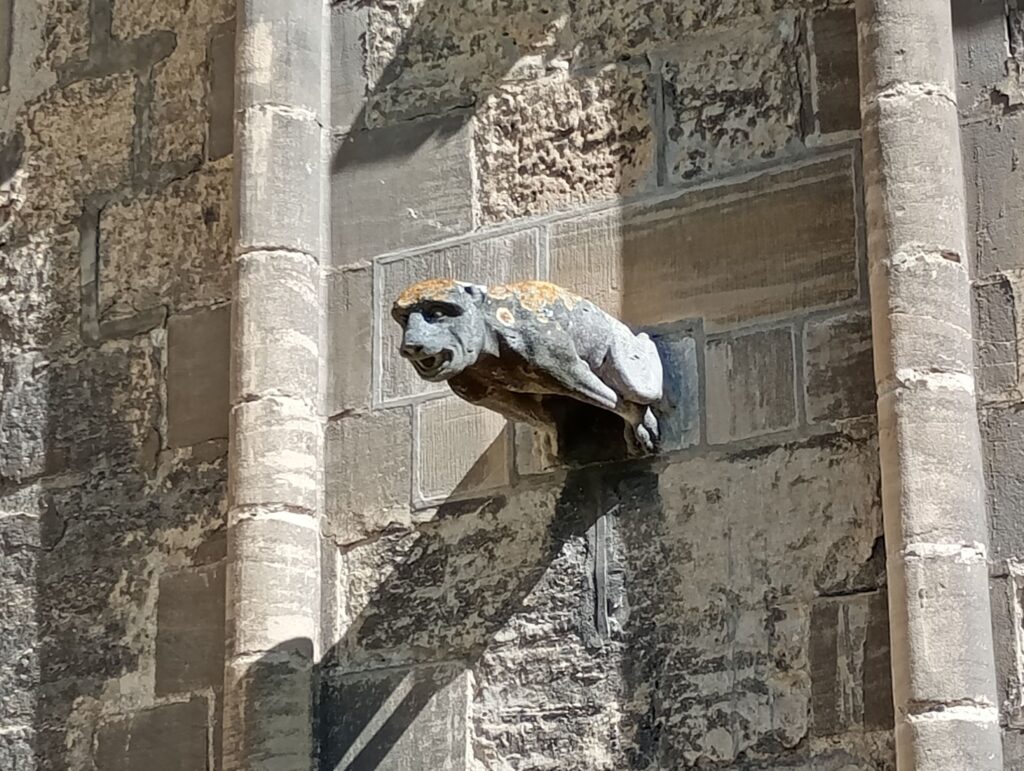
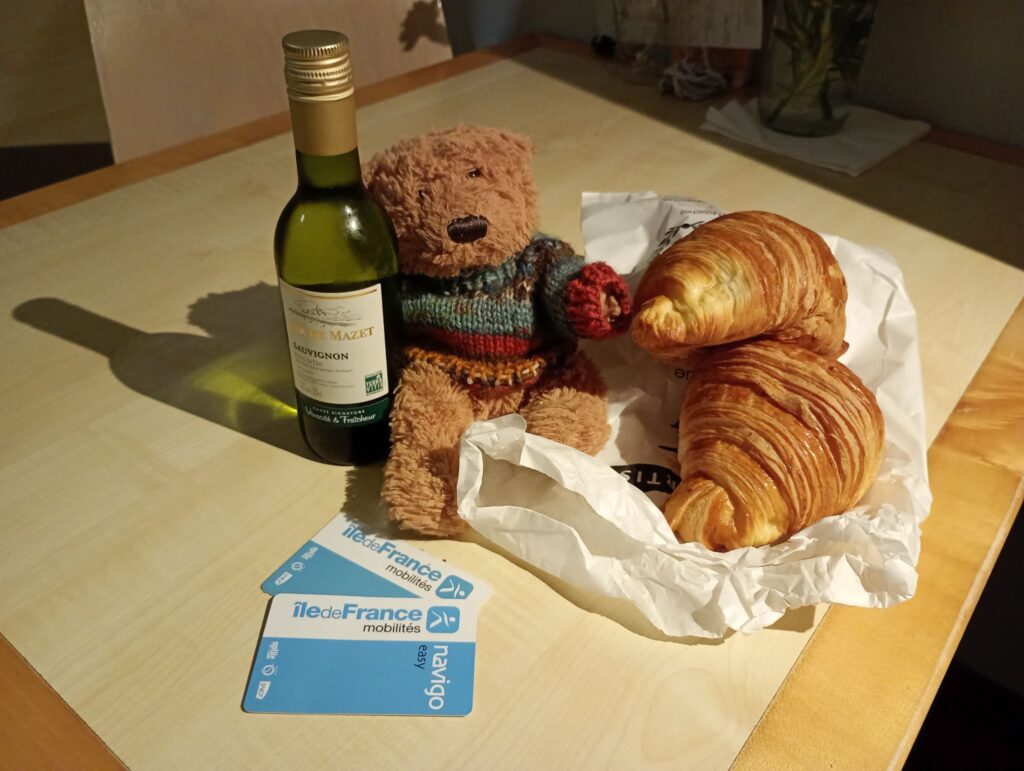
life, the universe, and a few-odd other things
















(‘Tis the season of cinnamon. I’m simmering some cinnamon sticks in my potpourri burner on the kitchen windowsill as I write this, just because I like the smell. And every time I put a fresh stick of cinnamon into the little pot on the burner, or liberally sprinkle cinnamon on apples for a pie or onto rolled out dough for cinnamon buns, I think about what a luxury it is to be able to do that. I wrote about it many years ago, in 2011, on my old Blogger blog, and though the prices quoted here have changed a lot, the rest of it still holds true. So I thought I’d share it again.)

26 November 2011
I went shopping the other day at our lovely local bulk foods store. We were running dismally low on such necessities of life as dried beans, rolled oats, and large chunks of chocolate, so the situation had to be remedied. Besides, Christmas is coming up, and it was imperative that I lay in the required supplies. One of the things I love about the bulk food store is the way it smells; they sell spices and other delectables from open bins with just a loose lid on them, so the scent permeates the whole shop. As it did my car, on the half-hour drive home.
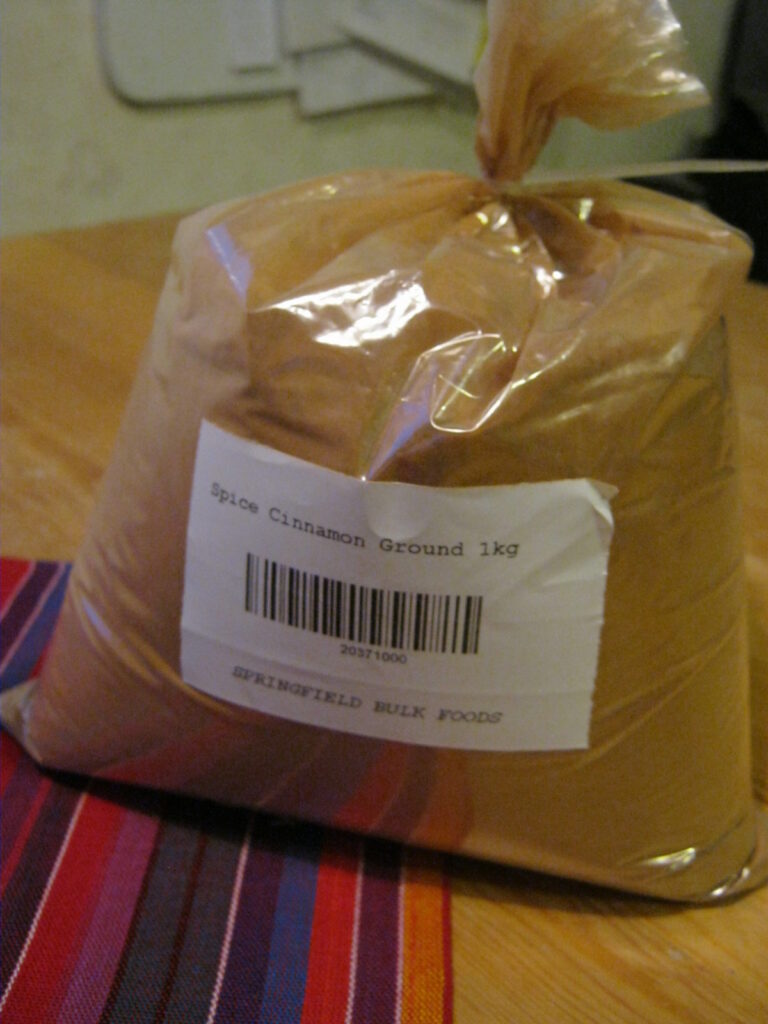
This, dear people, is a bag of cinnamon. A one-kilogram bag of cinnamon. For those of you in the US, that’s two-point-two pounds. And what I paid for it is $4.97. Four Canadian dollars, and ninety-seven cents. For those of you in Europe, that’s about €3.55. For those of you in the US, that’s $4.97. And for everyone else, that’s just plain ridiculous.
(2024 addendum: as I mentioned above, prices have changed a lot since then. At that same store, a kilo of Saigon [fancier] cinnamon now costs $25.56 – I just phoned them and asked. However. In 2011, minimum wage in this province was $8.75/hr; today it’s $17.40. So at minimum wage in 2011 you had to work for about 3/4 of an hour for a kilo of cinnamon, today it’s more like an hour and a half – not much more. Which is still ridiculous, because…)
You see, it was snowing that day as I was driving home, inhaling cinnamon scents all the way. Cold, white, soft flakes of snow. Temperatures just around the freezing point. And no, that’s not terribly unusual here for this time of year, even though, contrary to what you might think, I do not live in an igloo year-round, and my car moves on tires, not sled runners. (I live in Canada, not next door to Father Christmas and the North Polar Bear. Just sayin’.) But, my point is I’m driving home, through the snow, with a one-kilo bag of cinnamon in the car that I paid five bucks for.
For the last few years around Christmas, the local educational TV station has been broadcasting this very interesting show called “A Tudor Feast at Christmas” (2024 note: you can watch it on Youtube here). A team of English historians dress up in outfits from the late 16th century, go to an old manor house, and spend three days preparing a meal like the highest rungs of the social ladder in Elizabethan England would expect to be fed at a Christmas celebration (including a roasted peacock, ultra-elaborate and fancy). They use only the technology, ingredients and methods that would have been used at the time; and talk to the camera about how much bloomin’ work it is to grind almonds for marzipan in a mortar and pestle instead of using a food processor. Now that’s my kind of reality television!
So one of the blurbs that really stuck with me is where this food historian talks about cinnamon. He says, if I recall correctly, that cinnamon was nearly as precious as gold in those days – if not more so. Say, an English merchant outfitted three whole sailing ships, vessel, crew, supplies, everything, and sent those three ships off to the Spice Islands. He waits a full year for their return. Two of the ships are lost entirely, sunk off the coast of India in a storm. Just one of the ships makes it back to the cooler climates of Europe, its cargo hold loaded with the little fragrant brown sticks. That merchant, in spite of having lost two-thirds of an enormous investment, has just made his fortune for life.
Countries where it can snow in November are constitutionally incapable of growing cinnamon, so they have to bring it from elsewhere, from the far-away exotic shores of hot climates. Cinnamon, by rights, should be expensive around here. I have a feeling that my one-kilo bag of cinnamon, finely ground and powdery, probably equates to a wealthy person’s yearly income by 1597’s standards. But in case you were wondering, $4.97 doesn’t go very far in today’s Canada (note: in 2024, neither does $25.56). In fact, it’s only about twice of what I might pay for an equivalent weight in apples, which I could have picked from the trees in the orchard down the street a few months ago (note: now that isn’t actually true today – apples are way cheaper than that. But replace “apples” with “bread”, and it comes out about right).
I wonder if the price on whole roasted peacock with the skin put back on, presented at the table in all its peacocky splendour, is going to go through a similar price drop anytime soon?
Life, the Universe and Cinnamon. Steve says he’s looking forward to gingerbread. (2024: I’ll have to ask him if he wants any gingerbread this year too. Stuffed bears – they can be so demanding…)

And thus it begins – the first trip of the year. A short-notice-planned jaunt to Germany on family business, which on even shorter notice got rebooked for a few days early.
Steve and I got as far as the local airport, twenty minutes from home, where we found the first flight delayed by an hour, and then by another two. It’s fine as we originally had a seven-hour layover to the next leg of the flight, so now it’s four – still plenty of time. However, it also gave me time to have my anxiety spin in circles wondering if I should get one of the Offspring to come down to the airport and bring me my walking shoes instead of the half-boots I’ve got on now that I’m worried will be too warm for Europe, where it’s usually much more spring-like at this time of year then here. Fortunately, I smartened up in time, and thankfully the Offspring has plenty of patience with maternal fussings. Or, as he said, “What are children for if not to have compassion on your poor nerves?” (I pride myself on having raised them on a steady diet of Jane Austen movies, from which I now reap the benefits.)
Anyway. The three-hour delay resulted in us getting a $15 meal voucher from the airline. It was enough for a rice & chicken bowl at Tim Horton’s:

It was tasty, and unexpectedly spicy. I skipped eating the beans that were in it, for reasons we won’t go into here. (You’re welcome.)
So now we’ve progressed through security; Steve says the X-ray machine makes his head buzz. I forgot to take out my little bag of liquids, but they never even asked about it. Maybe they got confused by my question of whether I needed to take out the e-reader.
Another hour to the flight – provided they don’t delay it again. Ah well, the delay was for “unscheduled maintenance”, which I hope means they fixed whatever was wrong so that, for example, the wing doesn’t fall off in mid-flight and we have to make an emergency landing in the Rockies. However, if we do, at least I’m still wearing my boots and not flimsy walking shoes, which would be definitely be unsuited to mountaintop weather.
And that, for now, is Life, the Universe, and The First Trip of the Year. See you on the other side!

For some reason, the other day I found myself writing out the recipe for how to knit a teddy bear. I don’t remember where I learned that pattern; possibly in needle work class in elementary school. And then I tried out the instructions to make sure I remembered them correctly and they actually work. Which they do.
Knitting a teddy bear is easy. The only skills you need are knit stitch, casting on, binding off, and simple sewing. If you can make a scarf, you can make a teddy bear. (*For crochet instructions, see below – and here, too, if you can make a washcloth, you can make a teddy bear.)
For materials and tools, you need yarn (about one ball’s worth), knitting needles (optional: one spare one to hold stitches for a while), stuffing material, a yarn needle, scissors, a piece of ribbon for the neck, and either a few buttons or contrasting yarn for making the eyes, mouth and nose.
Teddy is made out of three squares, or five, if you want to be precise. Two small ones are the legs, which are joined together into one large square that becomes the body and head, and two more small ones are the arms, which get sewn on. The neck is made by threading a ribbon through the upper half of the large square and pulling it tight, and the ears are made from two corners of the head square.
You begin by casting on a number of stitches twice as wide as you want the legs to be—say, 15 (I did 10). Knit in garter stitch (i.e. knit all stitches, front and back) for as long as you want the legs to be, say, 20 rows (I did 13, and so on). Leaving a longish tail, cut the yarn. Put the live stitches on a spare knitting needle, or, if you don’t have one, thread a piece of yarn through the stitches to keep them from unravelling while you make the other leg (it helps if the holding yarn is a different colour).



Make the other leg exactly the same way. When you’ve reached the last row of the second leg, slip the leg stitches from the spare needle onto your working needle next to the second leg. You now have a row of stitches twice as wide as your leg pieces, and that’s the beginning of the body.
Knit across both squares, then continue knitting in garter stitch until the body and head are twice as long as the legs (another 40 rows). Bind off the knitting.



For the arms, knit two separate squares the same size as the legs (e.g., 15 stitches by 20 rows). Bind off the top edge.
To assemble your teddy, lay the body-and-leg piece in front of you with legs pointing away from you and the side of the knitting you want to be the outside of the teddy upwards. Fold the sides to the middle so the two edges meet. This will be your back and inside-leg seam.




Thread the yarn needle with a long piece of your knitting yarn. Start sewing from the top edge and go all the way down the back to where the legs meet, then instead of sewing the two edges together as back seam, sew the outside edges to the inside of each leg. Close the seam at the bottom of the leg for a foot. Turn right side out.
Sew up the arms: fold the arm squares in half lengthwise, right side together, and sew along two of the three sides. The third side is left open for stuffing and attaching to the body. Turn right side out.



Stuff your bear: stuff in filling, all the way down into the legs, the body, and the head, as tightly as you want it. Keeping the back seam in the middle of the back, sew up the head seam. Stuff the arms. You can either close the open arm seam like a pillow, or leave it open to sew directly onto the body.
Finish your bear: to separate the body from the head, thread a ribbon or a double length of yarn through the body piece about one-third of the way up, where you want the neck to be—just thread it up and down through the knit stitches, starting and ending in the front middle. Pull the ribbon as tight as you want, tie it in a bow. That’s the neck.
Sew on the arms on either side of the body.
To make the ears, sew across each of the two corners at the top of the head. You can catch a bit of stuffing in each ear, or not, as you like—stuffing makes the ears rounder and more bear-like; leaving in no stuffing and keeping the corner as pointy as possible looks more like a kittycat.
Sew on three buttons for the eyes and nose, or embroider eyes, nose and mouth.
Tuck all loose yarn ends inside the body.

Then give your bear a name, and give him a hug to welcome him to your family.
*PS: If you want to make a bear in crochet instead of knit, just crochet two leg squares (like two small washcloths); join them together into a big body and head square; and crochet two arm squares. The assembly is exactly the same as the knitted version.
PPS: If you want a written pattern, here you go:
KNITTED TEDDY BEAR
Gauge: doesn’t matter
Legs and body:
CO 15.
k across, turn, sl1 purlwise, k across, 20 rows
Put sts on spare needle.
Repeat.
Join first square to second (30 sts)
*k across, slipping first st purlwise*, for 40 rows.
Bind off.
Arms:
CO 15.
k across, turn, sl1 purlwise, k across, 20 rows
Bind off.
Assembly:
Sew together back, leg, and arm seams, stuff, close open seam, thread ribbon through for neck and pull tight, sew on arms, sew on buttons or embroider for face.

I just saw that today is our ninth bloggiversary on WordPress. After four years of blogging on Blogger, Steve and I moved house and came over to WordPress, in anticipation of publishing Seventh Son, which happened on Oct. 18th, 2014.

So, Happy Bloggiversary to us! If you feel like wasting, umm, I mean spending some time on browsing the Archives, there’s a handy button on the right entitled, fittingly, “Archives” (if you’re getting this per email, you’ll need to click on the title to go to the post in your browser to see it). Or you could type a keyword into the “Search” bar and see what there is to see on the topic – for example, “Steve”. You could find all about him; he’s a bear with history.
In other news, our main website just underwent a major overhaul; check it out at www.amoffenwanger.com (or www.clayandwords.com, that should get you to the same page).
And that, to keep it short and pithy, is Life, the Universe, and a Bloggiversary. More to come soon!

Steve says it’s time I gave y’all an update. (Side note: I like that word, “y’all”. It’s quite fascinating how the dialect of the Southern United States has created a new second person plural, which takes the place of what the word “you” used to mean. Back in the day of The Bard and the King James Bible, “thou” meant “you, the single person”, and “you” meant “you, the several people”. Nowadays, regular English only has “you”, as in, “you one” and “you many”. But Southern US English has re-invented a plural, so there you can say “you one” and “y’all many”. I wonder if it’ll ever make it into formal, written language? End of digression.)
So, yes, update. No, I’m not getting sidetracked, why would I? It’s not like I go on guilt trips about how much I have, or haven’t, written in the last while. In fact, I was going to (but didn’t) write a blog post on that: “The Year I Failed NaNoWriMo”.
Because, that did happen last November. I failed NaNo—dismally so. I only got a few thousand words done. But then, I’d set myself up for it. I wanted to see if I could write a novel and do regular work, as well. So I booked several editing jobs during November, as well as having some volunteer work to do (and never mind starting Christmas preparations), plus a trip to the coast for some family stuff in the middle of it. On top of it I was a NaNo ML (Municipal Liaison, i.e. regional leader or cheering squad), which brings a bunch more work with it. I know, I know, laugh all you want.
In fact, setting myself up for failure was a useful experiment. I once knew someone who set himself up to fail a university course: he signed up to the class with the full intention of failing, just to teach himself the lesson that it’s okay to fail. I wouldn’t quite go that far myself; for one, university courses are blinkin’ expensive—there are a lot of cheaper ways of failing. But I started NaNoWriMo 2022 with the idea that I probably wouldn’t finish my 50,000 words. I’d done it ten times in a row before, pushed myself to the finish line, got it done. So I knew what it takes for me to do it. I’ve seen others win NaNoWriMo “on the side”, though, while holding down full-time jobs or looking after young children, and I wondered if there was any chance of me doing so. Answer: No. I didn’t even get a part of a novel written. Which was no surprise, but still stressful.
I did learn a couple of useful things. I’m not a very fast writer, I’ve known that all along. Word sprints and word wars are useless for me. It’s not that I can’t type fast, but I can’t think fast, can’t craft sentences very quickly, so my word count per minute has never been high. Some of my friends can crank out 2000 words an hour without breaking a sweat, and I’ve always wondered how they do it and why I can’t. This time, during one of our online write-ins, I decided to just write stream-of-consciousness drivel, nothing whatever to do with any story I was writing, just to see how fast I could put words on screen. And what do you know, if all I’m doing is typing without trying to make sense, let alone paint a word picture, I can rack up the word count with the best of them! However, it’s a word count that nobody would ever want to read. There were words, even mostly-spelled-correctly words making somewhat-puncuated sentences, but they were utter dross, not a story. And I didn’t enjoy the process. So, it’s not that I’m a failure at writing, it’s that I have a different writing style from the one that cranks ‘em out fast*. I’m a Slow Writer. Which, given the fact that I’m into Slow Culture as a whole (Slow Food, Slow Textiles, etc.), is kind of a good thing. And like other aspects of Slow Anything, it means you (or rather I) have to take time for it, have to set time aside, or it won’t happen.
So! Now you know that I did not write a new novel last November. However. I do have a whole bunch of novels sitting around on my computer in varying states of completion. A few are finished, critiqued, edited, polished. Some are finished, i.e. completed novels, but need rewriting; one needs a whole different ending. And one is only half done, and I need to write the second half and get ‘er done. Also, there are some short stories kicking around that I’ve been submitting to contests, and/or might turn into a story collection, or expand into a novella or even full novel.
All that to say, Writing? Why yes, Steve, I have been writing, thank you very much. You can stop giving me censorious looks. And something might even come out of it, very soon.
That’s Life, the Universe, and News from the Writing Trenches in January** of 2023. I’ll let y’all know when there’s more to tell.
*Footnote: I’m not saying that people who write novels fast write dross; far from it. Just that their brains work differently from mine. I can only write really fast if I write drivel; if I want to write anything worth reading I have to take my time. And that’s okay.
**Edit after posting: I just noticed that it is, in fact, now February, not January. Which tells you where my brain is at. Ah well…

Finally, after three years of absence (one due to holidays, two to You-Know-What), this past weekend Steve and I got to go to a real-life, in-person Writers Conference again. People! Writers! Books! Workshops and conversations about plot and character and publishing and writing software and essays and food writing and the difficulties of switching genre and getting things done and how weird it is to be, well, as weird as we are… It was glorious.
What did I learn, you wonder? Well, aside from all the stuff I really can’t summarize in a little blog post—you had to have been there, that’s what we take those workshops for—there are two thoughts I came away with. Neither one of which should have been news, but they kind of were.
Thought #1: Writers don’t look like their publicity photos. Well, okay, some do; they’re just naturally handsome and photogenic and we all hate them for it. But several times that weekend, when a writer was introduced and walked up on stage, I had a little “Oh!” moment. As in, “Oh, they actually look like a normal person! They’re older/larger/less perfectly groomed/more grey-haired/whatever than I thought!” With some of them the “Oh!” moment happened when they started reading from their work: in their writing, they’re so eloquent, so polished, so poised—but on stage, there might have been a slight stammer or a lisp, or they read their work with less expression than it deserved, or their hands were shaking just a bit.
Writers, I realized, are just normal people. Even those “big names” with multiple published works and bestsellers to their credit, whom I look up to with a tinge of envy. Reading the eloquence of their writing, and looking at their attractive and polished photos, I got intimidated; then I saw them in the flesh, and they turned out to be—well, real. Actual human beings. I haven’t lost one iota of my admiration for them, I’m just not intimidated by them personally anymore (well, not as much). I can be inspired instead.
Thought #2: There is more than one way of doing things. “Thou shalt outline!”—“I can’t outline my novels, I have to write several discovery drafts and throw out the first three until I figure out what happens.”—“Write a synopsis first and work from that!”—“I don’t know what the book is about until I’ve written it.” All of those statements came from successful authors with several published books to their credit. Directly contradicting what the last successful author with several published books to their credit had said.
That there is more than one way of doing things is a revelation that I had about more than one creative field in the last couple of years. I wrote about it with regards to knitting (and life) two years ago, and just a few months back, I realized it about pottery: I was taught one particular way to throw on the wheel, and I was getting frustrated because I wasn’t doing very well with it. I concluded that it’s because I didn’t know the right way to do it. I started watching online videos, and several of the instructors were quite dogmatic about how it’s supposed to be done: Never, never use a sponge to pull up—no, always use a sponge to pull up! Wedge every piece you throw and make sure you put it on the wheel the right way around—no, just smack it into a ball, it doesn’t matter which way it lands on the wheel! This is the only right way to do it—no, this is the only right way to do it! The more online videos I watched and books I read, the more different ways of doing it I saw. And all of these people produce beautiful work.
It seems that that also holds true for writing (which, in case you missed the point, is my revelation du jour). Plotting, pantsing, structured, unstructured, according to a map, discovering as you go—what it comes down to is that you need to do what works. What matters is that you get the thing written. It’s irrelevant if you’ve outlined or inlined (I just made that up), as long as you get a piece of writing out of it. There is not just one way of doing things, and the really exciting thing about that is that because there are so many ways of doing things, you always have another option—if this doesn’t work for you, try that instead.
That’s what’s so wonderful about events like Writers Festivals: so many opportunities to learn different ways of doing things! And as exciting as it was to get back to an in-person conference, the Pandemic [ugh!] has actually had a good effect here. If you can’t make it to a real-life festival (either because you can’t afford it, or you live too far away, or, which is a perfectly legitimate reason, you’re not comfortable being physically close to so many germ-breathing strangers yet), the number of online options have proliferated in the last couple of years. You can attend festivals and learn from those amazing pros from the comfort of your own personal computer chair, finding out all about novel structure or how to plot a mystery, or, for that matter, how to sculpt a ceramic camel using newspaper as armature.
And I can tell you that the learning experience in an online conference can be just as intense; you need just as much time to recover from it as from a real-life convention (i.e., you spend the day afterwards collapsed on the couch, trying to let your poor brain recover from all the input). Speaking of which, I think Steve still hasn’t got over this one; he’s gone missing. I know he came home with me—here he is in the kitchen perched on the stack of books we brought home—but I haven’t been able to find him anywhere since. Well, I’m sure he’ll resurface once he’s had a long nap and revitalized his woolly brain.
Life, the Universe, and a Writers Conference. Writers are normal people, and there is more than one way of doing things.

“These are the chronicles of a writer and her stuffed bear…” So begins a blog post, in a galaxy far, far… well, actually, no, not far away at all. Right here, in fact. The chronicles of a writer—that’s me—and her stuffed bear—that’s Steve.

If you’ve been with us on this blog for a while, you’ll have encountered Steve quite a lot over the years. But it occurred to me that lately, he’s not been much in evidence. So I thought we could re-introduce him to our esteemed readership, and while we’re at it, give you—Ta-daa!—THE STORY OF STEVE.
The Story of Steve starts with Christmas quite a number of years ago. Truth be told, I’m not sure how many—it might have been 2007? “Nobody ever gives me any stuffed animals for presents!” I lamented. The eldest Offspring took it to heart. Enter: a small brown teddybear.

He was a Gund, and his tag said his name was “Aiden”. As anyone knows, when you adopt an animal, you rename him to properly make him part of your family (Louis the Cat was called “Sugar” at the SPCA. Yeah, no). So what to call this little brown guy? “Call him Steve,” the Offspring suggested, “because Steve’s a nice name!” That’s a quote from the movie Over the Hedge, in which the woodland animals are frightened by the sudden appearance of a hedge in their forest, and they decide to name it Steve in order to be less scared of it. For some reason that line is eminently quotable. So I laughed, and Steve it was. (The incriminating “Aiden” tag got removed in a labelectomy some years later.)
Steve spent the next couple of years hanging out on my bedside table. But his real rise to prominence came with my first ever blog post, August 1, 2010. I’d taken a course on how to blog, and the instructor said to never publish a post without a picture. So, I took a quick photo of Steve and stuck it in the post. “That’s Steve,” I said. “He’s better-looking than me, not to mention more photogenic, so he gets to have his picture in the blog first.”

Steve got popular quite quickly, being the designated cover model for the blog. He came along on coffee dates, he shoved in his oar on poetry and fairy tale studies, he wrote a blog post or two, he even acquired a Facebook page. (He claims I don’t let him on that page much, but, come on, when he has gone on he’s hardly posted anything.) He underwent a fashion makeover—from stylish bow to cosy knitted sweater—and he got several new friends in stuffed-animal-land .

He also came along on pretty much every trip I’ve been on in the last dozen years (except for the one where he was forgotten). He’s very portable, being so small and squishable. He’s been to writer’s conferences, family visits, sightseeing trips, weekend getaways, and once even a cruise; he’s seen Munich, London, Vancouver Island, Cambridge, and Stuttgart (mostly from the inside of my bag). I sometimes wonder what hotel housekeeping staff make of that small bear sitting next to my bed, and I live in dread of forgetting him someplace one of these days.

Steve writes poetry, but he’s never deigned to share it with me in a publishable format. He also has definite opinions on what stories I should write (they’re supposed to have bears in ‘em). Other than that, he’s a very restful roommate. At the moment, he’s hanging out with Molly the Plot Bunny on the bookshelf behind me in my study, keeping the print copies of my published books warm (he’s useful that way).

Steve has been a wonderful companion over these last few years. If you’ve ever considered inviting a stuffed bear into your life, do. I can highly recommend it.
So this, for today, was Life, the Universe, and the Story of Steve the Stuffed Bear. Stick around, you’ll see more of him. He’s that kind of bear.

I’ve been thinking about this for a while. And I’ve finally come to the conclusion that it’s time: I need to go dark for a while. No, it doesn’t mean I’m going to The Dark Side (even though they have cookies). It means I’m going to turn off the light switch on this blog.
Closed for renovations, remodelling, rethinking.
In the words of Tara Leaver, a lovely artist I’ve been following and taking inspiration from for some time: “I need to go dark. To be in the dark with my work – the winter dark, the dark of not knowing, the dark of not showing.” (Tara Leaver’s ArtNote newsletter, 16/11/2020)
So that’s what I’m going to do. You’re not going to see me around here for a while. Don’t worry, all the current posts will stay up, so you can re-read them at your leisure, and I’ll still be available via email if you want to talk to me. Also, Steve says that any bears or other stuffed animals who want to come by our house for a chat are more than welcome (it’s been established that they’re immune to Covid-19; social distancing is not an issue for them).
So I’ll sign off for now. Thank you, everyone, for being along for the ride with us, and Steve and I wish you a wonderful Christmas and New Year 2021!
That’s Life, the Universe, and Turning Off the Light Switch. Merry Christmas to All, and to All a Good Night!